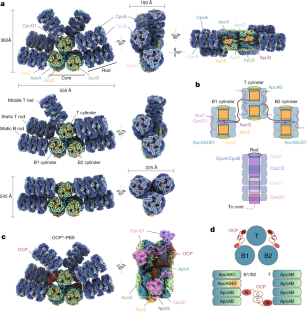マッケルビーエンジニアリングと医学部がハイドロゲルシステムを共同開発 McKelvey Engineering, School of Medicine collaborate to develop hydrogel system
2022-08-31 ワシントン大学セントルイス
高度に構造化された細胞は体外で培養することができず、不死化した細胞株はその構造に忠実でないため、有効な治療法の探索は妨げられてきた。ワシントン大学マッケルビー工学部と医学部の新しい研究は、この重大な障壁を克服することを目的としている。
この発見は、8月31日にScience Advances誌に掲載されたもので、培養ポドサイト細胞の生化学的・力学的環境を保持する新しいハイドロゲルシステムによって可能となった。このシステムでは、腎臓のろ過装置である単離糸球体から採取したポドサイトを、健康な腎臓と病気の腎臓でその近傍にあるであろうタンパク質のパターン上で培養することができる。この細胞は、急速に新しい形をとり、傷害に関連する新しいタンパク質構造を発現する。研究者は、この細胞が自己治癒するメカニズムを制御する新しい方法を見出すことができるようになった。
<関連情報>
- https://source.wustl.edu/2022/08/new-technology-offers-pathways-to-finding-treatments-for-kidney-disease/
- https://www.science.org/doi/10.1126/sciadv.abn6027
腎臓ポドサイト損傷の生体外培養モデルから、メカノセンシティブで、シナプトポジンを鋳型とするサルコメア様構造が明らかになった An ex vivo culture model of kidney podocyte injury reveals mechanosensitive, synaptopodin-templating, sarcomere-like structures
Shumeng Jiang,Farid Alisafaei,Yin-Yuan Huang,Yuan Hong,Xiangjun Peng,Chengqing Qu,Pongpratch Puapatanakul ,Sanjay Jain,Jeffrey H. Miner ,Guy M. Genin ,Hani Y. Suleiman
Science Advances Published:31 Aug 2022
DOI: 10.1126/sciadv.abn6027

Abstract
Chronic kidney diseases are widespread and incurable. The biophysical mechanisms underlying them are unclear, in part because material systems for reconstituting the microenvironment of relevant kidney cells are limited. A critical question is how kidney podocytes (glomerular epithelial cells) regenerate foot processes of the filtration apparatus following injury. Recently identified sarcomere-like structures (SLSs) with periodically spaced myosin IIA and synaptopodin appear in injured podocytes in vivo. We hypothesized that SLSs template synaptopodin in the initial stages of recovery in response to microenvironmental stimuli and tested this hypothesis by developing an ex vivo culture system that allows control of the podocyte microenvironment. Results supported our hypothesis. SLSs in podocytes that migrated from isolated kidney glomeruli presented periodic synaptopodin-positive clusters that nucleated peripheral, foot process–like extensions. SLSs were mechanoresponsive to actomyosin inhibitors and substrate stiffness. Results suggest SLSs as mechanobiological mediators of podocyte recovery and as potential targets for therapeutic intervention.


